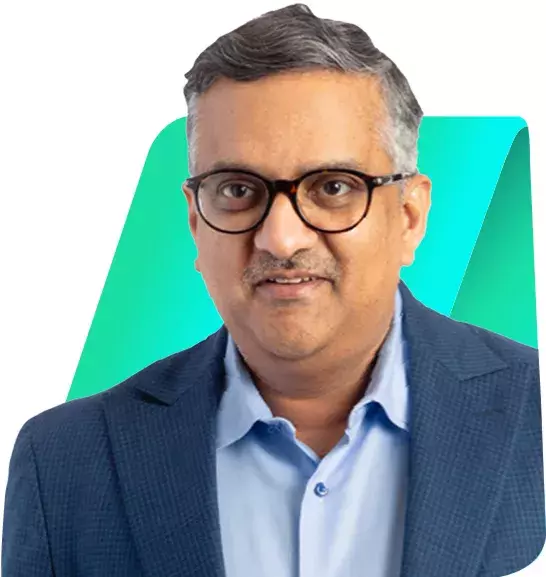ESG: Don’t Get Sacked
- ESGRC
- 28 February 23

Introduction
I love football, so bear with me. I see leaders contemplating ESG like a quarterback at the Super Bowl. If you wait too long to release the ball, you might get sacked.
The topic of ESG is also one of interest to me, not just because we were one of the first movers in the GRC space to provide an ESG solution but also because of the growing regulatory focus on climate-related financial disclosures. Having spent most of my career working for large global banks, I see the real value and brand equity that ESG can bring to your business and your customers, employees, and investors. As a CEO, I also understand that companies need to grow and remain competitive.
Conflicting views about whether ESG will result in real change or if it’s just hype is slowing the adoption of well-rounded ESG strategies by organizations. As businesses continue to experience pressure to implement proactive ESG measures, the conversation is becoming more divided. This includes conflicting views on balancing profit with purpose, what’s real and what’s under development, and who has the most to gain. Watching from the sidelines is no longer an option.
The Balancing Act
There is often a tradeoff between business goals and doing what’s right for the greater good. Undoubtedly, a dramatic and polarizing dichotomy is at play concerning ESG. On the one hand, businesses might need to take some cost-intensive measures to keep their emissions in check and build a sustainable future, which directly impacts their profits and dividend payouts. On the other hand, the regulatory landscape is starting to heat up; and customers, partners, and employees are beginning to demand more ESG-friendly practices and reporting.
Investments in ESG
Investors and customers are starting to cry foul and push back as ESG funds do not deliver on their promise of strong financial gains.
For example, after the California Public Employees’ Retirement System posted a decade of lackluster returns, Heather Gillers reported in the Wall Street Journal that “there is no such thing as a free lunch. Activists who think they can use public companies to pursue political agendas without endangering shareholder returns are indulging in a fantasy. Disappointing results at a giant government pension fund cannot all be tied to political agendas. Still, the retired workers who rely on Calpers have every right to demand that fund managers adopt a singular focus on maximizing returns.”
More recently, Florida Governor DeSantis also approved measures to “protect Florida’s investments blocking ESG investments” and ensuring that all investment decisions focus solely on maximizing the highest rate of return.
At the same time, the World Economic Forum recently released the Global Risk Report, which stated that “over a 10-year horizon, the health of the planet dominates concerns: environmental risks are perceived to be the five most critical long-term threats to the world as well as the most potentially damaging to people and planet, with “climate action failure,” “extreme weather,” and “biodiversity loss” ranking as the top three most severe risks.” The report also cited that, “racial justice also remains a pressing issue in many countries, notably the United States.”
I believe this provides a clear indication of where regulatory bodies will focus over the next few years.
Regulations are Coming
Regulators are already starting to gain traction in the development of ESG metrics. We are also beginning to see companies like Mastercard tie employee compensation to ESG metrics creating a sense of urgency to do good. So, while today some may enjoy the choice of improving ESG standings, this luxury will fade quickly.
On the regulatory front, the Climate Change Act commits the UK government by law to reduce greenhouse gas emissions by at least 100% of 1990 levels (net zero) by 2050. Large UK companies are already required to report publicly on energy use and carbon emissions. This January, the EU’s Corporate Sustainability Reporting Directive (CSRD) brought in stronger rules around the social and environmental data that companies will need to report. Approximately 50,000 companies, both large and small, are covered under the new directive. Also, in January this year, the U.S. Securities and Exchange Commission has cited April 2023 as the release date for a long-anticipated rule on companies' climate-related disclosures according to a recent federal notice. All of the above only scratches the surface, with many more regulations expected to come.
Reputations are at Stake
As a CEO, I am acutely aware that the culture I help build within my organization is critical to my success and that happy purpose-driven employees lead to more satisfied customers and growth. Building purpose in an organization means ensuring that employees feel proud and are confident that they are working towards a greater goal, protecting people, using natural resources wisely, and caring for the environment. Who can argue that these are not all good things and that organizations that drive towards creating a better future will be recognized?
At the end of the day, building a more sustainable and equitable future will require nonprofits, governments, and the private sector to agree and work collaboratively. In the meantime, we also desire to foster a more equitable and inclusive environment within our organization. The diversity of thoughts and ideas is an essential strength within an organization. Ensuring an inclusive environment, especially in the workforce, is paramount. Employees, customers, and partners are demanding it in the form of choosing one company over another and considering ESG metrics before taking the next step.
Reaching Your Common Ground
Just like any conflict, whether business or personal, we all know that at some point, we must come together in reconciliation and reach a conclusion that serves the masses and not just a few. So, while the politicians hash out their views, you need to consider your balanced approach and what strategy best fits the culture of your organization and your people. To ignore the inevitable has never worked, ever. You have nothing to lose by being the first mover on the road to a more sustainable and equitable future. I encourage you to take the first step, and here’s how.
If you have already invested in a governance, risk, and compliance solution, you are halfway there. A GRC platform allows an organization to address evolving business and market needs. It will enable you to accelerate decision-making with contextual, real-time intelligence delivered through advanced reports and analytics, all via the cloud. You can easily add an ESG solution to your existing GRC platform, gaining the ability to centrally manage disclosure requirements of various ESG frameworks, including GRI, SASB, and TCFD, and optimize the process with automated reporting.
If you do not have a GRC solution, you can look at standalone ESG solutions, but point solutions only offer an incomplete picture and result in a siloed approach to managing risk. Organizations implementing a more connected approach and ensuring collaboration between risk, compliance, audit, cybersecurity, and sustainability teams are more successful in the long run. Access to standardized, complete, and accurate data across the enterprise is critical to having confidence in the output and analysis.
Also important is to understand the role third parties play. Third-party risk management can often focus just on operational disruptions, bribery, corruption, and compliance risks, but an organization’s supply chain can account for more than 90% of its greenhouse gas (GHG) emissions. Incidents of child labor, worker exploitation, and health and safety issues can also emerge from your supply chains.
A common platform for all this data can significantly improve risk visibility, giving management a more nuanced and contextual understanding of ESG risks across their supply chain. An integrated platform also helps ESG and supply chain governance teams communicate and share data, thus minimizing redundancies and enabling a more comprehensive approach.
Don’t let the dichotomy of political tensions slow down your ESG journey or divert your attention away from what is just good governance. At the end of the day, the defensive end is heading your way, and he’s 6 feet 5 inches and 275 pounds. You better release that ball or tuck and run.
Register for the upcoming webinar: The Interconnectedness of ESG, ERM, and Third-Party Risk Management
Read the eBook: ESG and ERM: Bridging the Gap
Download the Resource: ESG Buyer’s Guide








